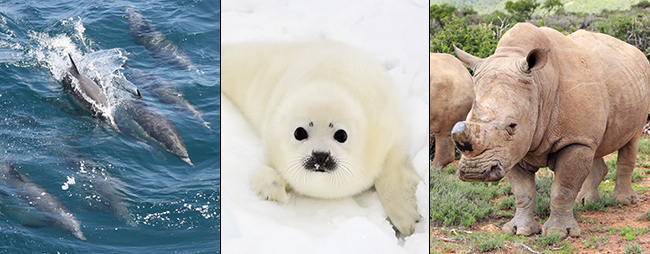
When it comes to defining what constitutes “animal cruelty” there is a wide range of opinions. Testing cosmetics and medical products on animals, and wearing real animal fur have been practiced for years. However just because something has become normalized, or is generally found acceptable by the public, does not mean that it is “right.” Below are some of animal controversies that have proven problematic for many industries as more and more people are beginning to advocate for the ethical treatment of animals.
Animal Testing: It has been estimated that some 50-100 million vertebrate animals are kept in captivity for the purpose of running tests for cosmetics, medical products, new technologies, and behavioral sciences, etc. Animal testing is a particularly controversial matter as animal rights groups oppose using creatures to be the literal “guinea pig” for modern discoveries, while reputable institutions like the British Royal Society and the U.S. National Academy of Sciences claim that no major medical discovery in the last century has been made without the use of animal testing in some capacity. Many of the human life-saving advancements that have been made are in part thanks to the animals upon whom tests and analyses were conducted, which is why there is an on-going debate about whether or not the end justifies the means when it comes to animal testing.
Animal Products in Medicine. In many parts of the world, animals contribute vital ingredients to medical products. Some of these at-risk animals include leopards, tigers, sharks, antelope, elephants, rhinoceros, tortoises, seahorses, deer, and numerous bear species. Granted, many would argue that there is an intuitive difference between using natural animal products (that have been ethically harvested) to improve/fortify a medical product is not the same thing as raising or capturing animals with the purpose of slaughtering them for a body part. We see examples of this in poaching elephants for their ivory tusks, and tigers being used for their many contributions to Chinese medicine products. Because many of these animals are endangered species who have been poached, the use of animal ingredients in medical products is wildly controversial (pun intended!).
Marine Animal Harvesting: Hundreds of dolphins and whales are driven into coves off the coasts of Taiji, Japan every year where they are systematically killed for their meat. While exposition about this routine has occurred, the Japanese government has not taken drastic enough measures to improve its fishing and hunting laws. Likewise, several kinds of seals are preyed upon and clubbed to death annually for seal product trade.
Seal hunting has been practiced for thousands of years, and still exists actively in Canada, Nambia, Iceland, Greenland, Norway, Russia, Sweden and Finland. Seal skins have been used for centuries as waterproof jackets, boots and fur coats, and seal meat and oil are still regularly traded. Every year hundreds of thousands of seals are slaughtered to sustain this industry. Though Canada has cracked down on seal-killing limitations (i.e., it is illegal to slaughter newborn harp seal pups and hooded seals less than 14 days old), and Russia disallowed the killing of seals under one year old, the tradition is highly controversial for animal activist groups around the world.
Fur Trade: Millions of animals worldwide are brutally killed and skinned for their pelts. The primary victims are raccoon dogs, foxes, mink, rabbits and chinchillas. Though much of the fur trade occurs in Asia, the industry is enormous, and one of the most controversial (though indefensible) topics when it comes to cruelty for animals. Find out more details about poaching and the fur industry.
Other controversial topics include
Animals in Captivity. Everyone considers going to the zoo as an enjoyable pastime, and a nostalgic experience of childhood, but is it right to keep animals in captivity? Some see this as a way to protect endangered animals and put them in a safe environment to breed, while others see this as unnatural, cruel and demeaning. In certain parts of China, the visitors are allowed to feed live animals to carnivorous creatures at the zoos. Live chickens, pigs and goats may be fed to hungry lions as a form or entertainment. Such occurrences (and the practice of keeping wild animals caged) causes zoos to be a point of controversy.
Animals in Sport/Hunting: This issues raises questions such as: should Greyhound dogs and race horses be bred and groomed to run race courses for entertainment? Fox hunting has been recently outlawed in the UK, should all hunting in America be illegal as well?
Animals in Entertainment. Should animals be trained to perform in shows, like those in Sea World, or in circus productions, and animal actors on film sets? What are the laws in place to protect these animals and defend their rights during training sessions, or in risky performance conditions?
These considerations are just a part of what animal rights activists fight to establish and defend on behalf of the animals who cannot speak for themselves.
Resources:
https://en.wikipedia.org/wiki/Dolphin_drive_hunting
http://us.whales.org/wdc-in-action/dolphin-drive-hunts
http://www.harpseals.org/about_the_hunt/index.php
https://en.wikipedia.org/wiki/Animal_testing
http://advocacy.britannica.com/advocacy/2008/09/traditional-chinese-medicine-and-endangered-animals-2/

